How Partisan Redistricting Divides and Harms Communities
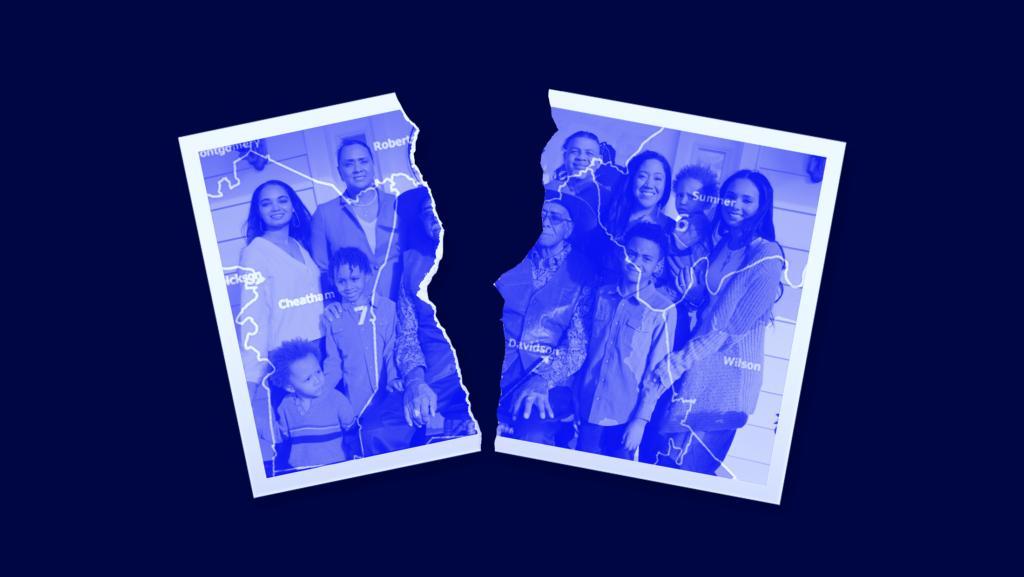
Media coverage of the congressional redistricting battles often focuses on the partisan horserace — how does this map or that map impact Democratic or Republican chances of winning the House of Representatives. But redistricting is about more than just who will control Congress. Fundamentally, it’s about political power and representation: who will have a voice in our policymaking process — and who won’t. The choices lawmakers make, no matter the reason, ultimately have consequences for how well different people are represented in our government.
When lawmakers decide to draw new districts in a partisan way, it’s all too easy for them to ignore this aspect of redistricting — that redistricting is about more than politics and it can cause real harm to real people. In this piece, we highlight four communities that were split up and silenced by partisan Republican redistricting this cycle.
Redistricting is supposed to give communities a voice in Congress.
One of the reasons we elect members of Congress from single-member, geographically-based districts is to give discrete communities of interest — groups of voters that have something in common — a voice in the legislative process. If everyone from a particular community is located in the same district, then that community theoretically has a greater influence in election outcomes and is more likely to be represented by a member of Congress responsive to its needs. While commonly thought of in terms of ethnic or racial groups, communities of interest can encompass a variety of underlying similarities such as living in the same city or engaging in the same economic activity — like farmers in California’s Central Valley or lobstermen on the coast of New England.
Partisan redistricting, however, places political considerations above the preservation of communities of interest. When mapmakers try to maximize their partisan gain with a new congressional map, certain communities are at risk of being split or otherwise manipulated in ways that weaken that community’s influence in the political process. This can lead to real harm, as the community is then less able to advocate for its interests and secure the resources and policy changes it needs from the federal government. During the current redistricting cycle, examples from Florida, Kansas, Tennessee and Utah illuminate Republicans’ attempts to sacrifice community power for electoral gain.
These four communities were divided by Republican partisan redistricting:
1. Black Floridians in North Florida
Perhaps no single district has proven as controversial this redistricting cycle as Florida’s 5th Congressional District. Currently stretching from Tallahassee in the west to Jacksonville in the east, this district was explicitly designed by the Florida Supreme Court in 2015 to give Black voters the ability to elect the representative of their choice. As the state’s high court noted in its opinion, “with a black share of registered Democrats of 66.1%, the black candidate of choice is likely to win a contested Democratic primary, and with a Democratic registration advantage of 61.1% to 23.0% over Republicans, the Democratic candidate is likely to win the general election.” Since its creation, the district has sent Black Rep. Al Lawson (D) to Washington.
During this redistricting cycle, Florida Gov. Ron DeSantis (R) and his allies contended that the district is an unconstitutional racial gerrymander that improperly unites two cities that have nothing in common. These objections fail to acknowledge the significant Black population in the rural counties also included in the district — such as Gadsden County, the only majority-Black county in the entire state. The large Black population in these counties is a direct legacy of slavery, as this region of Florida had the highest concentration of plantations before the Civil War. While not populous enough to elect a member of Congress by themselves, by joining them with the urban Black communities in Tallahassee and Jacksonville, the Florida Supreme Court ensured the descendants of slaves in this part of the state were able to exercise enough political influence to elect a representative of their choice.
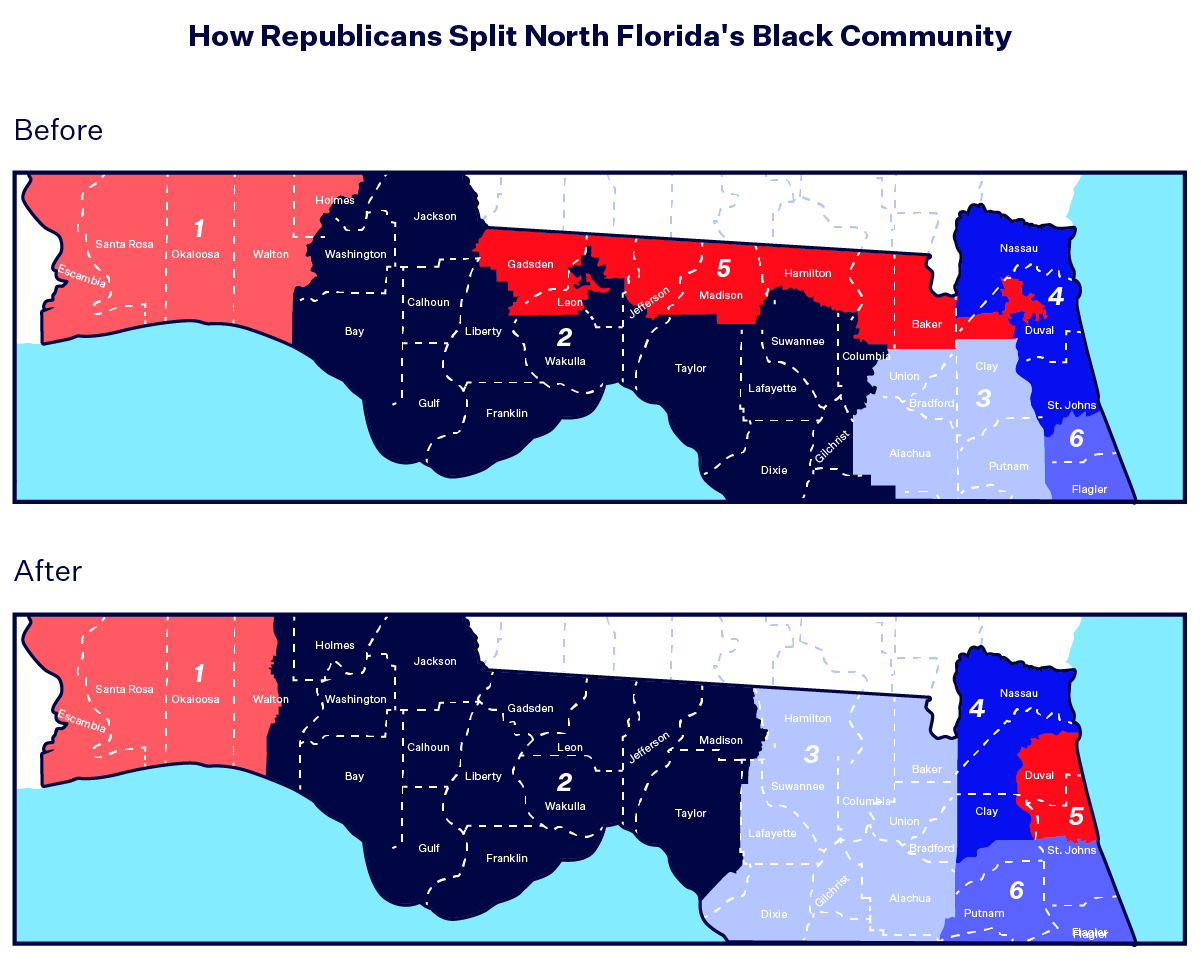
Unfortunately, Republicans in the Florida Legislature succumbed to DeSantis’ will and passed a congressional map that completely dismantles the 5th Congressional District, dividing its Black voters between four separate congressional districts. Black voters are outnumbered by white voters in every one of these districts, ensuring that if white voters vote for one candidate and Black voters another, the candidate supported by white voters will always win. As a result, an historically marginalized community has lost its representation in Congress and political power for years to come.
2. Minority Kansans near Kansas City
Another group of minority voters divided by Republican redistricting is located in the Kansas suburbs of Kansas City. Wyandotte County is the most diverse in the state, with a non-Hispanic white population of only 40.3%. Together with Johnson County, Wyandotte forms the Kansas portion of the Kansas City metropolitan area. Under Kansas’ court-drawn congressional map from the last decade, the two counties are united together in the 3rd Congressional District due to their “economic, political and cultural ties”. Additionally, the federal district court stressed the importance of keeping Wyandotte County whole “so that the voting power of its large minority population may not be diluted.” The 3rd Congressional District also happens to be the only district currently represented by a Democrat (Rep. Sharice Davids) in Congress.
Republicans in Kansas this year didn’t heed the court’s words. Instead of keeping Wyandotte County and the suburban portions of Johnson County together, Republicans passed a map over Gov. Laura Kelly’s (D) veto that split Wyandotte County between two districts. Gov. Kelly noted in her veto message that the enacted map “shifts 46% of the Black population and 33% of the Hispanic population” out of the old 3rd Congressional District into a district with a largely rural and white population. As a commissioner in the Wyandotte County government argued, this means the county “can’t consolidate [its] voting power, which means [it is] unable to advocate for [its] interests.”
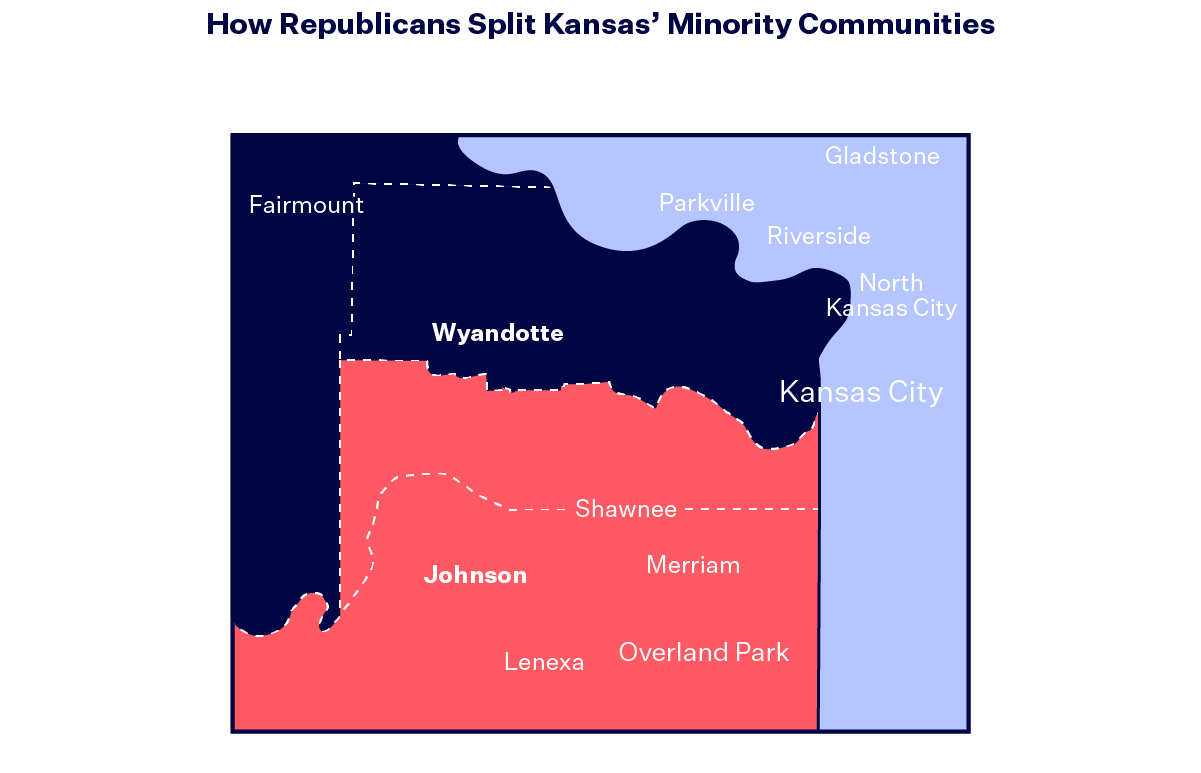
Why did Republicans decide to break apart Wyandotte County, despite it being kept whole for 90 of the last 100 years? Solely to maximize the Republican-lean of the state’s congressional delegation. Back in 2020 before redistricting even began, former Kansas Senate President Susan Wagle (R) vowed to enact “a Republican bill that gives us four Republican congressmen, that takes out Sharice Davids in the Third.” Splitting Wyandotte and reducing the strength of minority voters is how Republicans chose to go about achieving this goal, endangering Rep Davids’ reelection. Just like in Florida, Republicans sacrificed the unity of minority communities to enhance their partisan aims.
3. Nashville, Tennessee
Republican partisan redistricting doesn’t just harm minority voters — it can also lead to the division of entire cities, joining urban voters with rural voters who face very different challenges and have distinct preferences. One such city divided by Republican redistricting plans is Nashville.
Nashville, coterminous with Davidson County, is Tennessee’s most populous city. In recognition of the city’s unique identity and needs, it has been kept in a single district for as long as Tennessee has been a state. It’s also been a Democratic stronghold for almost as long, leading Republicans to target the Music City during redistricting this year. Since the Memphis-based 9th Congressional District is protected by the Voting Rights Act, Republicans took the only option left to expand their electoral advantage in the state’s congressional delegation: break with centuries-old precedent and break Nashville into separate districts.
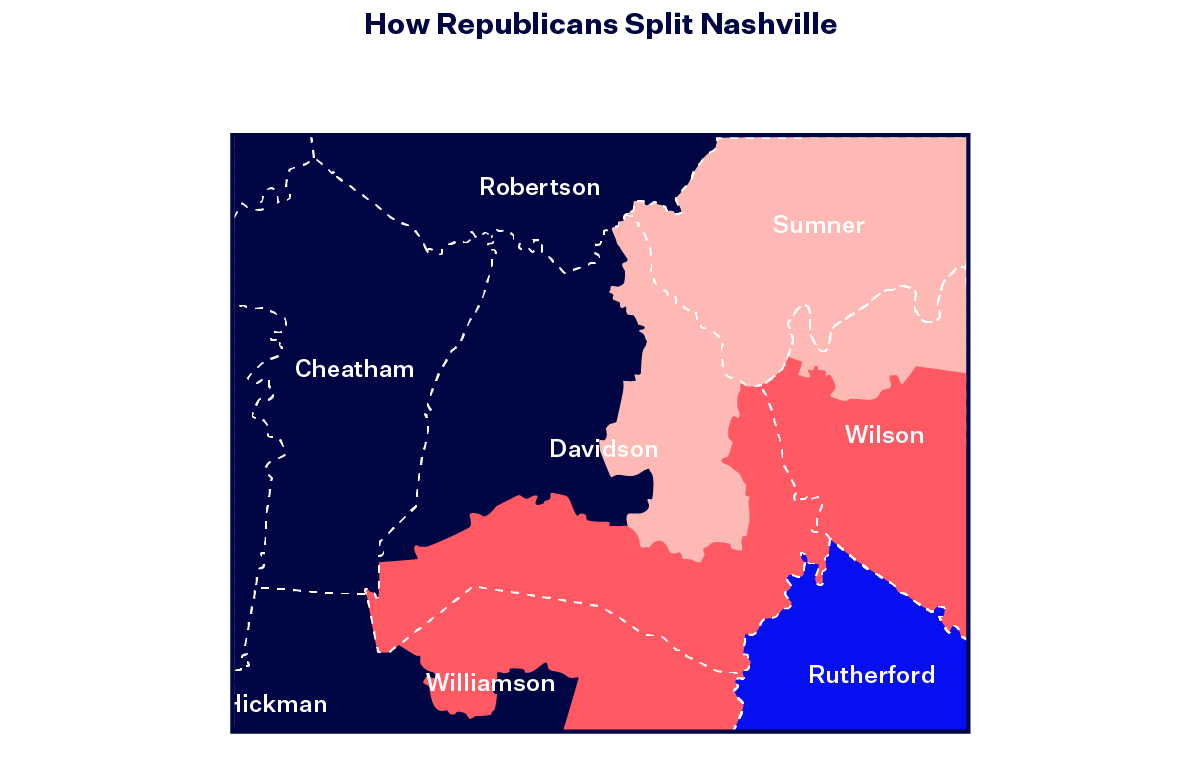
To dismantle Nashville’s influence and ensure its residents wouldn’t be able to elect a Democrat anymore, Tennessee Republicans divided Davidson County and Nashville into three districts, linking the city’s residents with far-flung rural residents that outnumber them. The new map compelled current Nashville Rep. Jim Cooper (D) to retire after representing the city in Congress for nearly 20 years. As local activists noted, this means the city “is less likely to have a relationship with [its] congressperson. The people who are going to represent Nashville don’t live in Nashville, don’t understand what the needs are in Nashville.” Importantly, they didn’t have to do this — Nashville is less populous than a single congressional district and could easily continue to be contained in a single district. But Republicans saw an opportunity to press their advantage and didn’t hesitate subsuming the city’s voice in the process.
4. Salt Lake City, Utah
Another city divided by Republicans is Salt Lake City, Utah. Like Nashville, Salt Lake City is Utah’s most populous. It’s also demographically and culturally distinct from the rest of the state, with the lowest percentage of Mormons and a large, vibrant LGBT population. Under nonpartisan redistricting standards that privilege communities of interest, Salt Lake City would likely anchor its own congressional district in recognition of its unique characteristics when compared to the rest of the state.
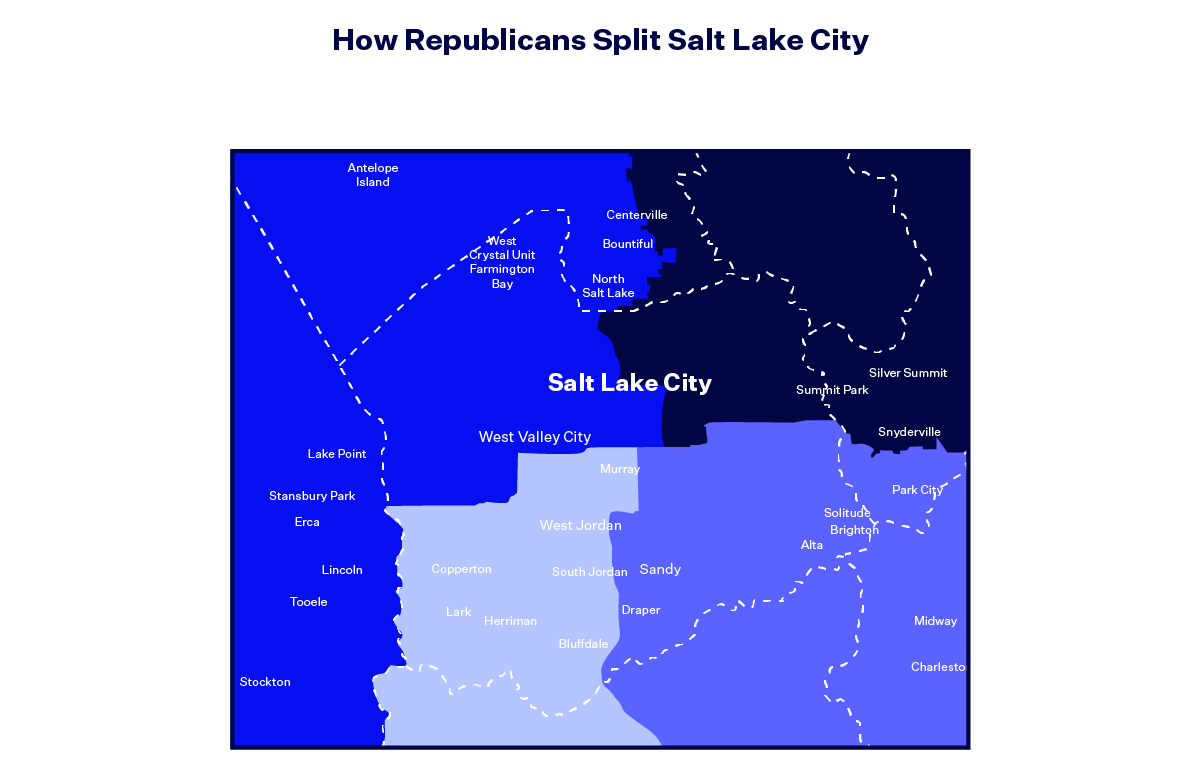
You can probably guess what Utah Republicans decided to do. Instead of following the recommendations of the state’s nonpartisan redistricting commission (which kept Salt Lake City whole to the greatest extent possible), the Legislature enacted a map that divided Salt Lake City and Salt Lake County across all four of Utah’s congressional districts despite overwhelmingly negative feedback from Utahns. Once again, the motive was partisan — splitting Salt Lake ensures all four districts will have a Republican lean. The population of each district outside Salt Lake County outweighs the population inside it — in no district are urban residents guaranteed to elect a member that will represent their interests. As Salt Lake City Mayor Erin Mendenhall observes, this “disenfranchises urban voters.”
But it wasn’t just urban Utahns that opposed the Legislature’s plan. Rural Utahns did as well. In testimony to the Legislature and the independent redistricting commission, rural mayors and residents objected to being joined with urban and suburban voters in Salt Lake County, arguing that, due to divergent interests, each community should be guaranteed its own separate representation. All four of Utah’s current members of Congress live in the Salt Lake City suburbs and the new map is unlikely to change that. Utah Republicans ignored the needs of both urban and rural voters when they drew their map, failing to ensure adequate representation to their constituents.
Gerrymandering isn’t just harmless politics.
In all four states, Republicans drew district lines to boost Republican candidates’ chances at winning election to the House of Representatives. In the process, they sliced up distinct communities across multiple districts, diluting their voices and weakening their influence on their representation in government. The harm inflicted on these communities is incalculable. Republicans often defend partisan redistricting as something that is inconsequential, just a natural part of politics. These assertions ignore the negative consequences redistricting has on distinct communities and everyday Americans. By undermining fair representation, Republican gerrymandering strikes at the heart of representative democracy. Until we succeed in reining in the worst abuses of partisan gerrymandering, communities will be split apart, voices will be silenced and we will not be living up to the highest ideals we claim to cherish as Americans.